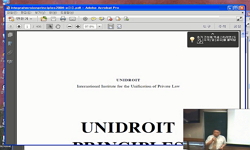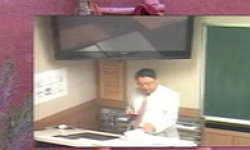China's agriculture is the basis of the national economy and the most basic industry in which people survive and develop, and policies/systems to support agricultural subsidies for a long time are an important part of China's agricultural development....
http://chineseinput.net/에서 pinyin(병음)방식으로 중국어를 변환할 수 있습니다.
변환된 중국어를 복사하여 사용하시면 됩니다.
- 中文 을 입력하시려면 zhongwen을 입력하시고 space를누르시면됩니다.
- 北京 을 입력하시려면 beijing을 입력하시고 space를 누르시면 됩니다.
https://www.riss.kr/link?id=T16082637
- 저자
-
발행사항
서울 : 건국대학교 대학원, 2022
-
학위논문사항
학위논문(석사) -- 건국대학교 대학원 , 국제통상비즈니스학과 , 2022. 2
-
발행연도
2022
-
작성언어
한국어
-
주제어
중국 농업보조금 제도 ; WTO ; SCM협정 ; 농업협정(AOA) ; 농업보조금 분쟁
-
발행국(도시)
서울
-
형태사항
98 ; 26 cm
-
일반주기명
지도교수: 윤상윤
-
UCI식별코드
I804:11004-200000588837
- 소장기관
-
0
상세조회 -
0
다운로드
부가정보
다국어 초록 (Multilingual Abstract)
In order to achieve the purpose of the study, first of all, this study analyzed the development process and status of the Chinese agricultural subsidy system, and found problems with the Chinese agricultural subsidy system. Next, in order to solve the problems of the agricultural subsidy system, the WTO's rules related to agricultural subsidies and successful overseas subsidy systems are considered, and the following three improvement measures are proposed to perfect the Chinese agricultural subsidy system.
First, specialized laws on agricultural assistance should be subsidized, and administrative rules for agricultural subsidies should be established. Second, it is necessary to clearly explain the items among agricultural subsidy policies, clarify subsidiary standards, and disclose subsidiary policies to supplement the agricultural support fund supervision system, as well as improve the efficiency of financial funds. In addition, it is necessary to attract private input and form a pluralistic support method. Third, it is necessary to improve the financial assistance support system for food production and the support system that promotes agricultural modernization. Through the research results, the implications of this study are presented as follows.
First, China can solve the problems existing in the international trade of agricultural products and increase the international competitiveness of Chinese agricultural products by combining the current status of agricultural subsidies with WTO in other countries. Second, in future international agricultural negotiations, China must actively participate in the enactment and revision of agricultural trade rules, make the rules more binding, and promote liberalization of agricultural trade by reflecting the interests of more developing countries.
China's agriculture is the basis of the national economy and the most basic industry in which people survive and develop, and policies/systems to support agricultural subsidies for a long time are an important part of China's agricultural development. In particular, the Chinese agricultural subsidy system plays an important role in the process of constructing a new socialist rural area, and promoted rural reform and development. The more developed,the more attention paid by countries to the development of their own agriculture, because developed countries realize the importance of agriculture. With the integration of the global economy and the development of the world economy, some developing countries have also begun to attach importance to the adjustment and development of agricultural policies. China is one of the main grain producers in the world. How to promote grain production and stabilize grain production has become one of the important issues to China. China's agricultural subsidy system went through three stages: the initial exploration stage(1949-1990), the development stage(1990-2003), and the reform, innovation, and original cost(2003-present). In 2001, China joined the WTO, resulting in incomparable changes in China's export trade environment, agricultural reform, and agricultural restructuring, and increased its desire to come up with solutions to achieve agricultural development. The purpose of this study is to first examine the WTO's rules on agricultural subsidies because China, as a member of the WTO, is obligated to comply with the regulations related to agricultural subsidies under the SCM Agreement and AOA agreements. Next, by analyzing the development and characteristics of China's agricultural subsidy system, it is necessary to closely examine China's agricultural policy through agricultural subsidy disputes between other countries, find ways to solve the structural problems of China's agricultural subsidy system, and suggest permanent agricultural development.
In order to achieve the purpose of the study, first of all, this study analyzed the development process and status of the Chinese agricultural subsidy system, and found problems with the Chinese agricultural subsidy system. Next, in order to solve the problems of the agricultural subsidy system, the WTO's rules related to agricultural subsidies and successful overseas subsidy systems are considered, and the following three improvement measures are proposed to perfect the Chinese agricultural subsidy system.
First, specialized laws on agricultural assistance should be subsidized, and administrative rules for agricultural subsidies should be established. Second, it is necessary to clearly explain the items among agricultural subsidy policies, clarify subsidiary standards, and disclose subsidiary policies to supplement the agricultural support fund supervision system, as well as improve the efficiency of financial funds. In addition, it is necessary to attract private input and form a pluralistic support method. Third, it is necessary to improve the financial assistance support system for food production and the support system that promotes agricultural modernization. Through the research results, the implications of this study are presented as follows.
First, China can solve the problems existing in the international trade of agricultural products and increase the international competitiveness of Chinese agricultural products by combining the current status of agricultural subsidies with WTO in other countries. Second, in future international agricultural negotiations, China must actively participate in the enactment and revision of agricultural trade rules, make the rules more binding, and promote liberalization of agricultural trade by reflecting the interests of more developing countries.
국문 초록 (Abstract)
중국 농업보조금 제도는 초기탐색 단계(1949-1990년), 발전현성 단계(1990-2003년), 개혁·혁신 및 원비(2003년-현재) 단계의 세 가지 단계를 거쳤다. 2001년 중국은 WTO에 가입함으로써 중국의 수출무역환경, 농업체제 개혁, 농업구조조정 등에 이전과 비교할 수 없는 변화가 생겼고 또한 농업발전을 이룩하기 위해서는 어떠한 해결책을 마련하여야 하는지에 대한욕구도 증대되었다.
본 연구의 목적은 우선 중국은 WTO 회원국으로서 SCM협정과 농업협정 상의 농업보조금 관련 규정을 준수해야 할 의무가 있기 때문에 WTO의 농업보조금 관련 규칙을 살펴보고자 한다. 다음으로 중국 농업보조금 제도의 발전 및 특징에 대한 분석하여 중국 농업보조금 제도는 다른 국가 간의 농업보조금 분쟁사례를 통해 중국 농업정책을 면밀히 검토할 필요성이 있으며 아울러 중국 농업보조금 제도의 구조적 문제를 해결할 방안을 찾고, 항구적인 농업 발전을 위한 제언을 제시하여야 할 것이다.
연구 목적은 달성하기 위해 우선, 본 연구에서는 중국 농업보조금 제도의 발전과정과 현황 및 국제 분쟁사례를 분석하고 중국 농업보조금 제도에 대한 문제점이 발견되었다. 다음에는 농업보조금 제도에 대한 문제점을 해결하기 위해 WTO의 농업보조금 관련 규칙 및 국외의 성공적인 보조금제도를 고찰하여 중국 농업보조금 제도의 완벽하기 위해 다음 3가지 개선 방안을 제시한다.
첫째, 농업보조에 관한 전문법률/법규를 보원해야 하고 농업보조금에 대한 행정 규칙을 세워야 한다.
둘째, 농업보조 정책 중의 항목을 명확하게 설명하고, 보조기준을 명확하게 하며, 보조정책을 공개하여 농업 지원 자금 감독체제를 보완해 증가한 재정 투입을 의거할 뿐만 아니라 재정 자금의 효율성도 향상시켜야 한다. 그리고 민간 투입 유치 및 다원적인 지원방식을 형성시켜야 한다.
셋째, 식량 생산에 관한 재정보조 지원 체계를 개선하고 농업 현대화를 촉진한 지원체계도 개선해야 한다.
연구 결과를 통해 본 연구의 시사점을 다음과 같다.
첫째, 중국은 WT0과 다른 국가의 농업보조금 제도를 참고하여 농업보조금 현황을 결합해 중국 농업보조금에 대한 법제도를 완벽함으로써 농산품의 국제 무역에 존재하는 문제를 해결하고 중국 농산품의 국제 경쟁력을 높일 수 있다.
둘째, 미래의 국제 농업 협상에서, 중국은 반드시 적극적으로 농산물 무역 규칙의 제정과 수정에 참여해야 하며, 규칙이 더욱 구속력을 가지게 하고, 더욱 많은 개발도상국의 이익을 반영하여 농산물 무역의 자유화를 촉진하여야 한다.
중국농업은 국민경제의 기초이자 국민은 생존하고 발전하는 가장 기본적인 산업으로 오랫동안 농업보조금 지원 정책/제도는 중국 농업발전의 중요한 부분이다. 특히 중국 농업보조금 제도...
중국농업은 국민경제의 기초이자 국민은 생존하고 발전하는 가장 기본적인 산업으로 오랫동안 농업보조금 지원 정책/제도는 중국 농업발전의 중요한 부분이다. 특히 중국 농업보조금 제도는 사회주의 신 농촌 건설 과정에 중요한 역할을 맡고 있으며, 농촌 개혁과 발전을 촉진하였다.
중국 농업보조금 제도는 초기탐색 단계(1949-1990년), 발전현성 단계(1990-2003년), 개혁·혁신 및 원비(2003년-현재) 단계의 세 가지 단계를 거쳤다. 2001년 중국은 WTO에 가입함으로써 중국의 수출무역환경, 농업체제 개혁, 농업구조조정 등에 이전과 비교할 수 없는 변화가 생겼고 또한 농업발전을 이룩하기 위해서는 어떠한 해결책을 마련하여야 하는지에 대한욕구도 증대되었다.
본 연구의 목적은 우선 중국은 WTO 회원국으로서 SCM협정과 농업협정 상의 농업보조금 관련 규정을 준수해야 할 의무가 있기 때문에 WTO의 농업보조금 관련 규칙을 살펴보고자 한다. 다음으로 중국 농업보조금 제도의 발전 및 특징에 대한 분석하여 중국 농업보조금 제도는 다른 국가 간의 농업보조금 분쟁사례를 통해 중국 농업정책을 면밀히 검토할 필요성이 있으며 아울러 중국 농업보조금 제도의 구조적 문제를 해결할 방안을 찾고, 항구적인 농업 발전을 위한 제언을 제시하여야 할 것이다.
연구 목적은 달성하기 위해 우선, 본 연구에서는 중국 농업보조금 제도의 발전과정과 현황 및 국제 분쟁사례를 분석하고 중국 농업보조금 제도에 대한 문제점이 발견되었다. 다음에는 농업보조금 제도에 대한 문제점을 해결하기 위해 WTO의 농업보조금 관련 규칙 및 국외의 성공적인 보조금제도를 고찰하여 중국 농업보조금 제도의 완벽하기 위해 다음 3가지 개선 방안을 제시한다.
첫째, 농업보조에 관한 전문법률/법규를 보원해야 하고 농업보조금에 대한 행정 규칙을 세워야 한다.
둘째, 농업보조 정책 중의 항목을 명확하게 설명하고, 보조기준을 명확하게 하며, 보조정책을 공개하여 농업 지원 자금 감독체제를 보완해 증가한 재정 투입을 의거할 뿐만 아니라 재정 자금의 효율성도 향상시켜야 한다. 그리고 민간 투입 유치 및 다원적인 지원방식을 형성시켜야 한다.
셋째, 식량 생산에 관한 재정보조 지원 체계를 개선하고 농업 현대화를 촉진한 지원체계도 개선해야 한다.
연구 결과를 통해 본 연구의 시사점을 다음과 같다.
첫째, 중국은 WT0과 다른 국가의 농업보조금 제도를 참고하여 농업보조금 현황을 결합해 중국 농업보조금에 대한 법제도를 완벽함으로써 농산품의 국제 무역에 존재하는 문제를 해결하고 중국 농산품의 국제 경쟁력을 높일 수 있다.
둘째, 미래의 국제 농업 협상에서, 중국은 반드시 적극적으로 농산물 무역 규칙의 제정과 수정에 참여해야 하며, 규칙이 더욱 구속력을 가지게 하고, 더욱 많은 개발도상국의 이익을 반영하여 농산물 무역의 자유화를 촉진하여야 한다.
목차 (Table of Contents)
- 제1장 서론 1
- 제1절 연구배경 및 목적 1
- 제2절 연구방법 및 논문구성 2
- 제3절 선행연구 5
- 제2장 WTO 및 주요국 농업보조금 관련 규칙 9
- 제1장 서론 1
- 제1절 연구배경 및 목적 1
- 제2절 연구방법 및 논문구성 2
- 제3절 선행연구 5
- 제2장 WTO 및 주요국 농업보조금 관련 규칙 9
- 제1절 농업보조금의 의의 9
- 1. 농업보조금의 개념 9
- 2. 농업보조금의 종류 11
- 제2절 WTO의 농업보조금에 관한 주요 규칙 12
- 1. 일반보조금과 농업보조금 12
- 2. WTO 보조금 및 상계조치에 관한 협정 14
- 3. WTO 농업협정 18
- 제3절 주요국가 농업보조금 정책 및 보조금 운용현황 22
- 1. 미국 농업보조금 정책 및 보조금 운용현황 22
- 2. 유럽(EU) 농업보조금 정책 및 보조금 운용현황 26
- 3. 한국 농업보조금 정책 및 보조금 운용현황 31
- 4. 일본 농업보조금 정책 및 보조금 운용현황 34
- 5. 소결론 37
- 제3장 중국 농업보조금 제도의 발전과정 및 현황 40
- 제1절 중국 농업보조금 제도의 형성 및 발전 40
- 1. 계획 경제 시대(1949-1978년) 40
- 2. 개혁 개방 이후 농업보조금 지원정책(1978-1990년) 41
- 3. 90년대부터 ‘세금 분배 제도(分税制)’(1990-2003년) 43
- 4. 신 농촌 건설 시기 중국 농업보조금 지원정책(2003-2015년) 45
- 제2절 중국 농업보조금 제도 현황(2016년-현재) 55
- 1. 중국의 농업보조금 운영현황 55
- 2. WTO에 통부된 중국의 국내 농업보조금 현황 60
- 제4장 중국 농업보조금 제도에 대한 분쟁 사례 64
- 제1절 식량생산보조 분쟁설탕 분쟁 64
- 제2절 브랜드 상품 수출보조 분쟁 77
- 제3절 설탕 분쟁 79
- 제5장 중국 농업보조금 제도의 문제점 및 개선 방안 82
- 제1절 정책수립을 중시하고 법제도 부족 문제 및 개선 방안 82
- 제2절 보조금 정책의 투명성 부족 문제 및 개선 방안 83
- 제3절 농업보조금 지원체제 미비 문제 및 개선 방안 84
- 1. 식량 생산에 관한 재정보조 지원 체계의 개선 84
- 2. 농업 현대화를 촉진한 지원체계의 개선 85
- 3. 민간기업의 투입의 유치 85
- 제6장 결론 86
- 제1절 연구의 결과 86
- 제2절 시사점 및 한계점 87
- 1. 시사점 87
- 2. 한계점 88
- 참고문헌 90
- ABSTRACT 96










